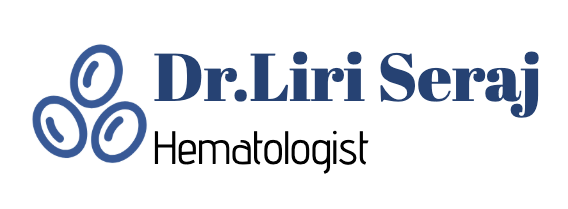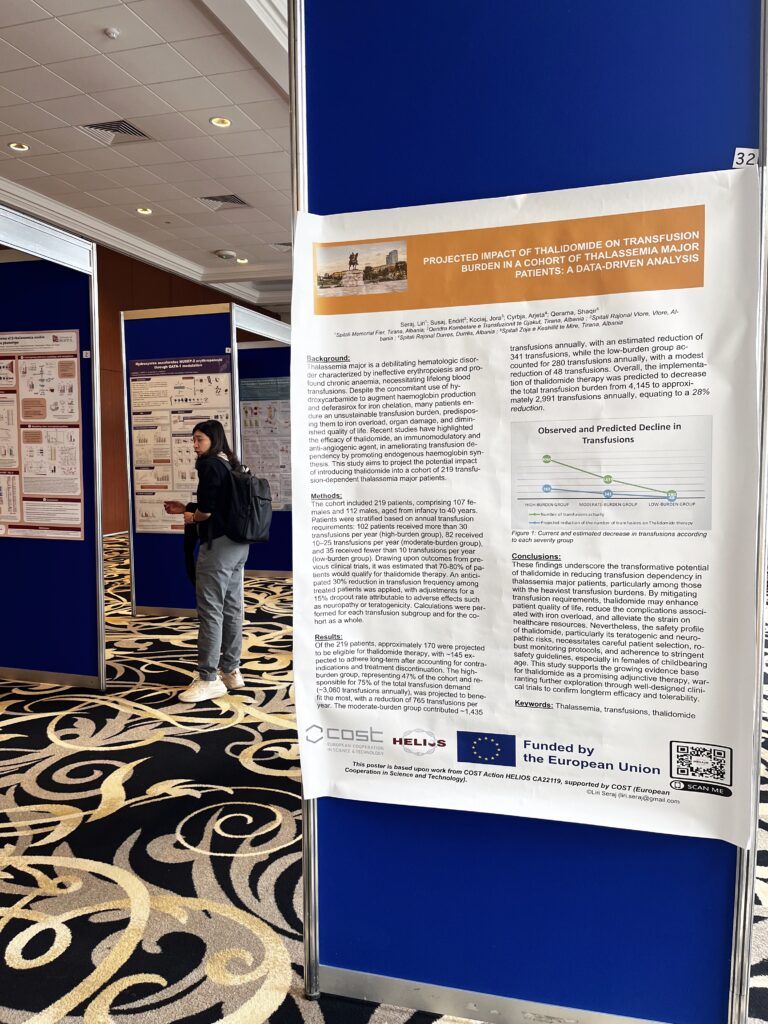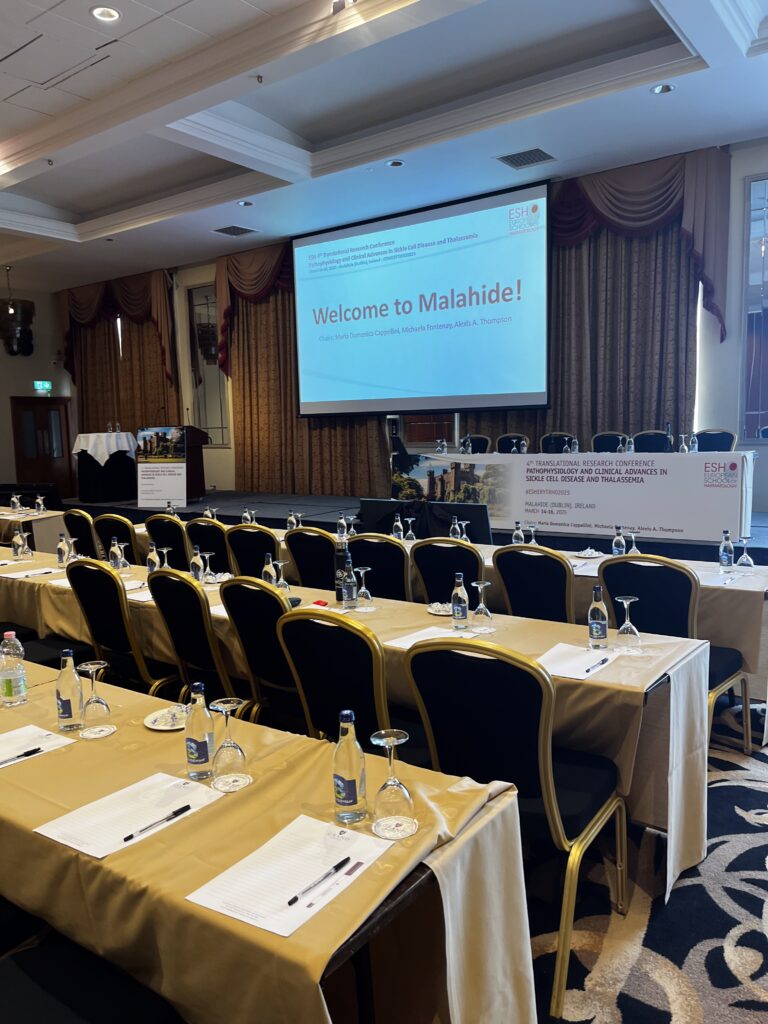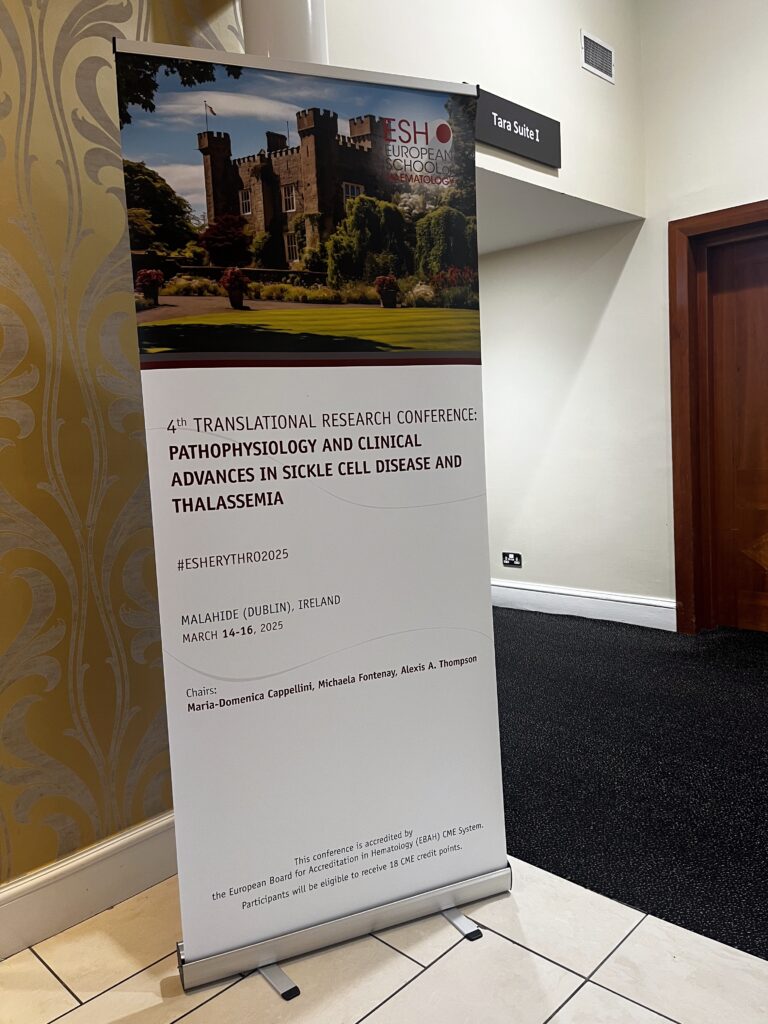Did you know that approximately 2.5 million reticulocytes are produced every second in our bone marrow?
The recent conference I attended was not your typical large-scale event with thousands of attendees, and that is precisely why I prefer these smaller, more intimate gatherings. They offer greater opportunities for meaningful interactions with fellow researchers, fostering a sense of community while maintaining a focused, theme-driven environment that is easier to navigate.
Each year, I strive to attend at least one European School of Haematology (ESH) conference on a topic of particular interest to me. This year, I was fortunate enough to attend two ESH conferences, both of which included the opportunity to present a poster.
The most recent one—the 4th Translational Research Conference: Pathophysiology and Clinical Advances in Sickle Cell Disease and Thalassemia, held from March 14-16, 2025, in Malahide (Dublin), Ireland—was by far my favorite to date. Initially, I was uncertain about the location, as major conferences are typically hosted in large cities with well-known hotels. However, this experience exceeded my expectations. The setting—a charming seaside town—combined with ESH’s impeccable organization, made for an incredibly rewarding experience.
For the first time at a conference, I felt confident enough to actively participate in discussions. Professor Maria-Domenica Cappellini’s lighthearted encouragement—”Ah, at least a young one asking! Where are the young people?”—helped create a welcoming atmosphere, inspiring attendees to engage more freely. While the conference leaned more toward translational biology than clinical applications, I gained valuable insights into emerging areas of research, particularly in drug repurposing for modulating erythropoiesis in haemoglobinopathy patients.
My poster, selected for a poster walk-in session, focused on drug repurposing, specifically data-driven projections on how thalidomide could impact transfusion rates in thalassemia patients across three severity groups. Based on real-world data, our analysis predicted a 28% reduction in transfusion dependency within a year of thalidomide use—a figure that holds significant implications for a country like Albania. The pressing question now is: Can we secure approval from the Ministry of Health for thalidomide’s use in haemoglobinopathy patients? While lenalidomide has recently been approved for reimbursement by the government, its approval is currently limited to multiple myeloma patients.
Strategically positioned at the entrance of the poster room—despite being number 32—my poster received substantial visibility, as attendees had to pass through the area en route to the plenary session hall. This research was conducted as part of the COST Action HELIOS CA22119 initiative and was supported by COST (European Cooperation in Science and Technology), with data provided by colleagues from key haemoglobinopathy centers in Albania.
I became involved in the HELIOS project after the conclusion of the EUNNET initiative, which had been an incredibly enriching experience. Captivated by HELIOS’ collaborative and dynamic approach, I immediately applied. I highly recommend participating in COST projects to anyone looking to expand their professional network and advance their career.
When I completed my hematology residency, my training had been primarily focused on onco-hematology, leaving me with little experience in treating haemoglobinopathy patients. However, upon starting work at a tertiary hospital in an area with a high prevalence of haemoglobinopathies, I quickly realized the need to deepen my expertise. This prompted me to seek out specialized conferences and training opportunities, leading me to HELIOS. My first meeting with the HELIOS group in Athens (2024) was incredibly welcoming—an engaged, supportive, and highly motivated community that I now actively encourage others to join.
HELIOS aims to establish a network of excellence for integrating, harmonizing, and disseminating knowledge on haemoglobinopathies, including Sickle Cell Disease and thalassemia syndromes. The initiative comprises five working groups that coordinate a broad spectrum of haemoglobinopathy-related activities, spanning clinical and molecular research, data analysis, and bioinformatics. While I am involved in three of these groups, my demanding schedule prevents me from contributing as much as I would like.
This was also my first time receiving a COST action grant, and I must extend my gratitude to Sotiroula Chatzimatthaiou, the HELIOS Grant Holder Manager. Her efficiency, responsiveness, and positivity made the entire application process seamless. I truly appreciate her invaluable support.
I am eagerly anticipating the next opportunity to meet the HELIOS team in person this coming May for a training school on FAIR principles in Larnaca, Cyprus.
Key Takeaways from the Conference:
- Inflammation plays a crucial role in end-organ damage in Sickle Cell Disease patients (Grunenwald et al., Blood Advances, 2025).
- SF3B1 mutant hematopoietic stem and progenitor cells (HSPCs) exhibit increased erythroid-megakaryocytic hematopoiesis and heightened metabolic activity.
- Luspatercept, the first approved drug for transfusion-dependent patients (Sickle Cell and Thalassemia), modulates erythropoiesis, influences GATA1 expression, increases HbF in transfusion-dependent responders, and elevates erythropoietin levels in this patient group.
- Regulating the balance between erythrocytes and granulocytes in inflammation is critical for managing anemia of inflammation.
Conferences like these continually spark new research ideas, whether through panel discussions or informal debates. I am eager to follow up with real-world data to assess the impact of drug repurposing on transfusion-dependent patients in Albania and hope to present these findings at next year’s conference.
For more information about HELIOS, or to join this highly recommended initiative, visit: HELIOS Action.
For details on upcoming ESH conferences, I encourage you to visit: ESH Conferences.





